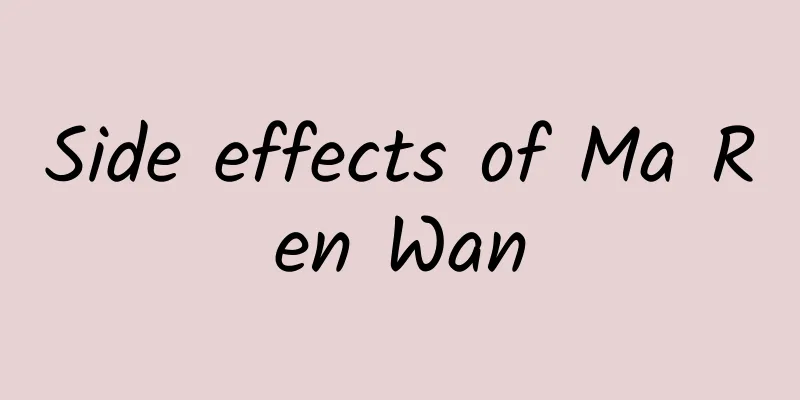The efficacy and function of Cissus pubescens

|
Cissus pubescens is a very common Chinese medicine. Although it is very common, it has many magical effects. Let’s take a look at it below. 【English name】root of Assam Treebine [Alias] Left climbing vine, gourd leaf, left vine, thick shell vine, red-backed silk, white-backed silk. [Source] Medicinal material source: The vine stem of the plant Erysiphe pubescens of the grape family. [Original form] The bitter orange is a climbing subshrub. The whole plant is glabrous or more or less rusty-colored with short soft hairs. The twigs have obvious stripes and are terete; the tendrils are sometimes forked, initially hairy and then gradually become hairless. Simple leaves are alternate; petioles are 2-5cm long, initially covered with rusty long soft hairs; stipules are membranous, nearly round, 3-4mm long; leaf blades are membranous, cordate, 7-12cm long and wide, apex short acute or caudate acuminate, base cordate, margins serrulate, bright green or dark gray-green, more or less shiny, light reddish brown when dry, glabrous on both sides when mature or sometimes more or less covered with short soft hairs on the back. Flowers are bisexual, with cymes consisting of umbels that are shorter than leaves and opposite to them; pedicels are slender, 3-4mm long, and elongated when fruiting; calyx is cup-shaped and glabrous; petals are 4, ovate; stamens are opposite petals; disk is shallowly wavy and 4-lobed; ovary is superior, glabrous or more or less hairy. The berries are small, pear-shaped, 6-8mm long, 4-5mm in diameter, black when dry, and contain one seed. The flowering period is from April to August, and the fruiting period is from August to September. [Habitat distribution] Ecological environment: Grown in dense forests in low and medium mountains or sparse forests beside streams. [Properties] Identification of properties: The vine stem of this product is oval or oblate, with a diameter of 0.3-1.5cm. The surface is dark brown or gray-brown, with ridge-like stripes and accompanied by numerous reddish-brown dot-like protruding lenticels. The nodes are obvious, and the internodes are 5-10cm long. The cross section is uneven, the cortex is narrow, the xylem is yellowish brown, the rays are radiating, the holes of the ducts are obvious, the xylem is easily separated into longitudinal sheets, and the central pith is reddish brown. It has a slight odor, light taste, and a smooth taste. [Identification] Physical and chemical identification (1) Take 1g of the powder, add 10ml of petroleum ether, reflux in a 50-60℃ water bath for 30min, and filter. Place the filtrate in evaporating blood, evaporate to dryness, add 0.5 ml of vinegar to dissolve the residue, add 1 drop of sulfuric acid along the edge of the evaporating dish, and the solution will change from red, yellow, blue to green. (Check saponins) (2) Take 1 g of the powder, add 5 ml of water, reflux on a water bath for 15 min, and filter while hot. Take the filtrate and place it in a test tube, add 2-3 drops of a-naphthol test solution, and slowly add 0.5 ml of sulfuric acid along the wall of the tube. There will be a purple-red ring at the junction of the two liquids. (Check polysaccharides) 【Nature and flavor】 Light; slightly astringent; neutral 【Meridian】 Liver; Kidney 【Functions and indications】Relieve cough; relieve asthma; detoxify. Mainly used for cough, asthma, and snake bites [Usage and Dosage] For oral use: decocted in water, 3-6g. For external use: take appropriate amount and mash it for application. [Discussions by various scholars] "Xinhua Compendium of Materia Medica": taste is light, slightly astringent and neutral. It has the functions of removing toxins, reducing swelling, dispersing blood stasis and relieving pain. Used for bruises and sprains. Rheumatic joint pain, bone fractures, carbuncles and swellings. 【Excerpt】 Chinese Materia Medica Above, we introduced the hairy-leaved cissus and its characteristics. We can know that the hairy-leaved cissus has very good efficacy and functions, and has played a therapeutic and auxiliary therapeutic role in many diseases. I hope this will be helpful to everyone’s health. |
<<: The efficacy and function of horse honeysuckle
>>: The efficacy and function of golden chrysanthemum
Recommend
The efficacy and function of Nahu
Many people are not very clear about Nahu, so whe...
Roaming around the world: 2015 Outbound Wi-Fi Big Data Report
On February 1, Global Roaming, the largest outbou...
Ministry of Commerce: In 2025, the national online New Year's Festival retail sales will exceed 700 billion yuan, setting a new record
The Ministry of Commerce announced at a press con...
Humans have 145 foreign genes. Why can genes be transferred across species?
There are genes from other species in the genome ...
Regalix: 84% of marketers worldwide say marketing automation helps expand sales
199IT original compilation Marketing automation a...
Please parents, stop saving! These 7 summer illnesses are caused by saving...
One minute with the doctor, the postures are cons...
What are the effects and functions of Radix Rehmanniae and Radix Ophiopogonis?
Speaking of raw rehmannia root, most people may n...
Can I eat evening primrose during menopause?
When women reach a certain age, their bodies will...
The world's first, 1935.3 grams! How significant is the "digging" on the far side of the moon?
On June 28, the National Space Administration hel...
The efficacy and function of conger eel eggs
Conger eel eggs are rich in nutritional value and...
Can I eat mugwort after giving birth?
Pregnant women are relatively weak after giving b...
The efficacy and function of mountain alum root
There are many common Chinese medicinal materials...
When you feel depressed, adding some sugar, can sweets really make you happier?
Although it is not good for your slim figure, hea...
What is it like to de-ice an astronomical telescope millions of kilometers away?
"The de-icing program should restore and pre...
How to make your own tangerine peel?
As we all know, tangerine peel is not only a mate...






![The efficacy and function of Gentiana gentiana[picture]](/upload/images/67ca3fa6bcde5.webp)


